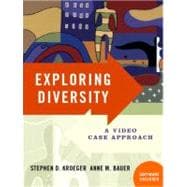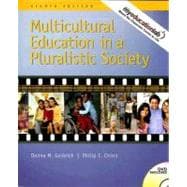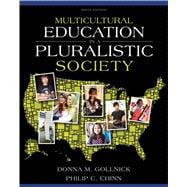Exploring Diversity : A Video Case Approach

Exploring Diversity : A Video Case Approach
- ISBN 13:
9780131172586
- ISBN 10:
0131172581
- Edition: 1st
- Format: Paperback
- Copyright: 12/30/2003
- Publisher: Pearson
List Price $20.40 Save
| TERM | PRICE | DUE |
|---|---|---|



List Price $20.40 Save $12.83
In Stock Usually Ships in 24 Hours.
We Buy This Book Back!
Free Shipping On Every Order
Note: Supplemental materials are not guaranteed with Rental or Used book purchases.
Extend or Purchase Your Rental at Any Time
Need to keep your rental past your due date? At any time before your due date you can extend or purchase your rental through your account.
Summary
Introduction
This interactive CD-ROM and accompanying activity guide provides immediate access to powerful, living, classroom examples of culturally responsive teaching. The CD contains four video clips, grouped by topic (One Teacher's Influence and Majority Culture) and classroom (2nd grade literacy and 7th grade science). The activity guide provides discussion of various concepts, including culturally responsive teaching, instructional planning, classroom climate, and how to engage families; and it offers activities and questions that guide students toward understanding, analyzing, and synthesizing the video cases. The CD and guide work together as a field experience for students, where they can view quality examples of culturally responsive teaching in a classroom setting.
What Is Culturally Responsive Teaching?
Culturally responsive teaching celebrates each student as part of the learning community and recognizes the role that students' real-life experiences and cultural traditions can play in the classroom. Culturally responsive teaching recognizes that students bring with them knowledge and experiences that are essential to their construction of concepts in the classroom. It reflects the knowledge, skills, and dispositions of the INTASC (Interstate New Teacher Assessment and Support Consortium, 1992) Standards. Culturally responsive teaching recognizes that each individual's beliefs about teaching and learning have a significant impact on his or her interactions in the classroom.
Organization of the Text
This guide includes detailed instructions on how to install the CD-ROM, and how to navigate through the CD's template. It also provides contextual information and performance assessment to effectively observe and understand each video case. This contextual information will help draw meaning from these observations.
The guide is organized into three parts. Part I, Understanding Culturally Responsive Teaching, contains four chapters.
Chapter 1 responds to the question, "What is culturally responsive instruction?" In this chapter, culturally responsive instruction is defined, and each of its elements is discussed. Particular emphasis is placed on three principles of culturally responsive instruction: (a) utilizing cultural themes, (b) cooperative learning, and (c) creating a vision for celebrating diversity.
Chapter 2 describes differentiated learning as a primary strategy for putting culturally responsive instruction in action.
Chapter 3 describes aspects of classroom climate and structures for management. Cooperative learning and recognizing the role of multiple intelligences in managing classrooms are discussed. The chapter concludes with a discussion of functional behavioral assessment of specific behavioral concerns.
Chapter 4 presents research related to families from various culturally groups and issues related to cultural competence in family engagement.
Part II of this guide describes each of the video cases and gives a brief introduction for each case. This is followed by a description of the cases' key elements. Each chapter concludes with discussion questions (suggested responses presented at the end of the guide) and open-ended questions for consideration.
Part III presents the following resources: performance assessments and scoring rubrics, acknowledgements, sample responses to case questions, and a list of references.
The CD-ROM Video Cases
Four cases, each presenting a unique aspect of culturally responsive instruction, are included on the CD-ROM. These cases address primary grades, middle school, and secondary school. They also discuss cultural, ethnic, linguistic, and socioeconomic diversity.
In the first case, Janice Glaspie and Darwin Henderson are working with literate, inner city, African American children. In this classroom every child is challenged, feels safe, and experiences the joy of learning. Though well-meaning individuals may emphasize the need for direct instruction with young children in inner urban settings, they demonstrate the use of literature to enhance literacy learning. As Ms. Glaspie contends, these children are literate.
At first glance, the second video case appears to present a homogeneous classroom. The socioeconomic diversity and developmental needs of these middle school students, however, have a significant effect on the interactions in the classroom. In this science classroom, Cathy Burton works with students to make connections to other content areas, as well as worldwide issues using poster projects and presentations.
In the third case, a secondary school teacher, Ms. Joy Lohrer, saw a need for diversity in the school. Rather than impose structure, she turned to the students for ideas and suggestions. Ms. Lohrer initially provided the specific agenda of the tolerance training videos and then generated a list of student-desired activities. This educator made a commitment to meet each Thursday. Her goal was to listen to students. In this video case, Ms. Lohrer provides an example of "what one teacher can do."
In the final case, Guy Jones, Hunkpapa Lakota and a full-blood member of the Standing Rock Sioux Nation, discusses assumptions that may have an impact on the self-concept of young children. In this conversation with his colleague, Sally Moomaw, they illustrate how classroom practices—some of which are imbedded in our own experiences as students and teachers—are laid bare in view of another culture.
Features
For a better understanding of the video cases and to gain insight into the concepts and practice of culturally relevant teaching, several supports are provided in this booklet. Each section begins with the Interstate New Teacher Assessment and Support Consortium (INTASC) Standards Principles, Content, Knowledge, and Dispositions that are addressed in each video case. The guide's features also include:
- Reflection questions to help consider the material provided.
- Key points of each case, followed by questions.
- Sample responses to the discussion questions.
- List of references for further reading.
- Performance assessment activities that provide evidence for the indicated Principles of the Interstate New Teacher Assessment and Support Consortium.









